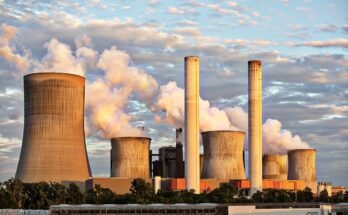The environment is a part of life which we cannot see just from the surroundings or nature, but profoundly contains in the life of human society, culture, and development. Not only does “environment” have different but related meanings depending on the context (ecology, urban planning, building environmental science, etc.), carrying with it the challenges and concerns particular to that field. In this post we will be looking at three different usages of the environment concept across, but inherently related fields: ecology, urban planning, and environmental science.
1. Ecology: Exploring Ecosystems and Their Interactions
In ecology, the environment is the set of surrounding conditions in which an organism exists. Including both the physical and biological elements, like air, water, soil, and the assorted organisms that interact within an ecosystem. Ecologists examine these relationships and how they influence the equilibrium of nature. The environment here is not merely the natural world as a pre-emptive backdrop, but rather a fluid, multifunctional system in which organisms` behaviors and relationships iteratively adapt to the things they connect with in the surrounding world.
Ecosystems — whether rainforests or deserts or oceans — are complex webs of life and their physical surroundings. In a healthy ecosystem like a forest, trees, plants, animals, fungi, and microorganisms all cooperate to ensure the ecosystem thrives and supports life. It’s this knowledge that is crucial in conserving biodiversity and the delicate equilibrium upon which life can be sustained on the planet.
Ecologists embrace environmental aspects such as nutrient cycles, food webs, climate change, habitat destruction and so on, trying to understand how these can be affected by humans or natural forces. Their research is vital to directly implementation of conservation policies and sustainable management of natural resources.
2. Urban PlanningFurther readingUrban planning refers to design, regulation, and policies, as well as the art and science of designing and developing…
The built environment refers to the man-made structure where people live and work under the urban planning. Cities, infrastructure, and public space shape urban environments. Urban planning is all about designing and regulating the use of land, resources, and the built environment to create urban spaces that are functional, healthy, and sustainable by considering transportation, housing, green spaces, accessibility, and amount of community engagement.
With the increasing urban population, it thus becomes even more important to create environments that not only appear beautiful but also promote well-being. Just as urban planners try to balance development with protection of natural environments, with parks, green rooftops, and sustainable architecture. Air quality, noise levels, access to nature and density are environmental factors that are crucial to urban design because they have a direct impact on those living in cities.
Sustainability. Sustainability is a key element of urban planning. Specifically, it means building cities that are able to withstand environmental threats like climate change, pollution, and dwindling resources. From traffic lights to home energy use to smart meters, data is being used to create smart cities to make modern urban living more manageable and sustainable.
3. Environmental Science: Confronting Global Issues
Environmental science covers a wide range of a subjects that tackle the challenges faced by our planet as pollution changes, climate change, and sustainability. In this sense, the environment is both the natural world and the social systems that interact with it. Environmental science is that branch that explores the effects of human activity on the planet and devise ways to reduce harm, restore ecosystems and promote sustainability.
Pollution, in terms of air, water, or soil contamination, is one of the primary problems that environmental science aims to combat. Scientists study the sources and effects of pollution and develop ways to clean up polluted areas. For instance, they could spend time examining the destructive role carbon emissions play in climate change and create plans for curtailing greenhouse gases.
Environmental science also involves conservation, which is dedicated to preserving biodiversity and protecting natural habitats. Environmental scientists seek to understand the threats facing endangered species, ecosystems and natural resources, and advocate for policies that protect the environment and ensure Earth’s biodiversity continues.
And sustainability is probably the most overarching theme in environmental science. This means ensuring that we satisfy current needs without limiting the potential of future generations to do the same. This idea is implemented in many fields including energy generation, farming, waste management and urban planning. Environmental scientists work towards finding solutions that align human growth with ecological well-being, advocating for renewable energy, sustainable agriculture and circular economies.
Ecology, Urban Planning and Environmental Science Interconnections
Although ecology, urban planning, and environmental science are all concerned with different facets of the environment, they are all inextricably linked. Natural ecosystems are essential for the health of urban environments, and urban development can severely impact biodiversity and the balance of ecosystems.Most of these trends have been in one direction, and the decline of biodiversity that we’ve witnessed in most ecosystems has likely done great harm to irreplaceable parts of a sustainable society. Then, the environmental science helps provide data for both further urban planning and ecological conservation efforts.
For instance, we can imagine urban planning should be conducted with ecological studies in mind so that cities are constructed to be in sync with the ecosystems. And, likewise, environmental science provides the tools with which to measure how sustainable urban sprawl is so that city planners can minimize the environmental impact of new construction.
Conclusion: We All Have a Role to Play
Understanding humans, as with any the concepts such as ecology, urban planning or environmental science to explain the concept of the environment are rooted in association and mutual coexistence with the natural world. Whether we’re designing cities, studying ecosystems or confronting pollution, we are realizing more and more that our work in one area — combating climate change, fighting biodiversity loss, addressing resource depletion — affects every other part of the planet.
Deepening the level of penalties for pollution is also something that requires work, and we must work together not only to punish the bad actors but also to recognize the good ones in our midst who are turning their lives around by creating eco-friendly and eco-conscious solutions that respect the environment. Ultimately, the environment is not only “out there.” The environment is the world we literally live in, and keeping it going takes everyone, across disciplines, sectors, industries and the globe.



